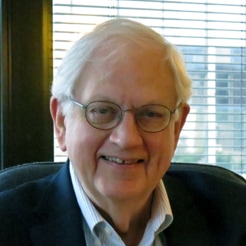
NEXUS: Economic Growth, Democracy, Community Development
Here at ME&A, we have long been a proponent of local economic development (LED) strategic planning as a central approach to development, and we are currently working on refined models of its application, both internationally and domestically. Borrowing from existing models of economic development, particularly those of the World Bank and successful approaches carried out in the US and other developed countries, we incorporate best practices of each into a flexible approach that can be applied in many developing countries.
To begin, we base our approach on the premise that regional economies are more natural ones than national models, and should be an important focus of USAID country strategies. That is because regional (local) economies are the primary engines of economic activity. Focusing on them with development strategies will yield the most benefit from limited resource allocation. According to urbanist Jane Jacobs, “A national economy is the sum of a nation’s city economies and the past and current secondary effects of city economies upon the economies of towns, villages and wildernesses.”
The nexus between economic growth and other aspects of community development and democratic governance is all in the “how” regional and local strategies are applied, and the selection of institutions and individuals involved in the process. Here are some key factors:
- Strategies must be based on the real economy of the region, with accurate delineation of the region geographically, an accurate profile of assets and challenges, and a competitive analysis of the economic or business sectors of the economy. These regions are essentially “organic,” and rarely follow political jurisdictional lines, so must include collaboration with multiple political jurisdictions.
- The key institutions of the region must be involved, both public and private, in partnership—the classic public-private partnership. Targeted developmental assistance should be focused on the institutional and human resource requirements utilizing human and institutional capacity development (HICD) approaches.
- Resources should be applied from a variety of sources, both public and private. But for long-term sustainability, private sources are best. Donor aid should not be counted on in the long run.
- Objectives related to democracy, governance, and civil society are realized through the participatory “from the bottom up” nature of the LED process, designed into the program. All relevant stakeholders are involved in setting objectives, development priorities, and measuring results. Advocacy for good governance and related themes can be a prominent part of the process.
- Community development objectives are taken into account by expanding the thrust of the strategic process into areas beyond purely business and economic ones, such as health, education, transportation, and public utilities—clean water and sanitation systems—and others related to the environment and the quality of life. The City Alliance program model of a City Development Strategy (CDS) is one such example. However, the strategy must be based on economic growth as its most important pillar.
Current focuses for donor aid programs, including those of USAID, are often driven by analyses of national economies. National governments, their policies and resource allocations are of course important, and provide the context for regional and local development. But a more direct and fruitful approach for a democratic country with a market economy focuses on key regional economies, which are normally, but not always, on a sub-national level, and city-centered. Our approach suggests that more time be given to regional economic analysis, which will lead to the creation of the right solutions to meet the real challenges of a nation and its people.
- About the Author
- Latest Posts
Thomas C. England, ME&A’s Chief for Strategy and Innovation, has more than 40 years of experience in policy and management positions in both the public and private sector with specific expertise in international development programs. He is one of ME&A’s co-founders and served as CEO and President, and as Chairman of the Board of Directors, for more than 30 years.


